If you know anything of its past, the name Dreamland Park likely inspires a sense of dread within you. A tale of kidnapping, rape, torture and murder at the hands of the notorious Pagan motorcycle gang are what this park is most well-know for. But what if I told you the park’s shady past didn’t begin with the murders that occurred on its grounds in August of 1969? To understand the scope of Dreamland Park’s true legacy we need to go back to the beginning and examine the man who built it.
Disclaimer: Dreamland Park is private property and trespassing is prohibited. I was given permission to explore this property.
Ralph Kreitz, the “Slot Machine King”
Dreamland Park was the brainchild of Ralph Kreitz. Kreitz was born on July 27th, 1899 in Reading. One of the first mentions of him in the Reading Times was a July 9th, 1918 article about the then-18 year old Kreitz being a promising baseball player on a local club team. For whatever reason it does not appear his baseball career ever took off, and by 1922 Kreitz established himself as a manager and partner in the newly formed V.V.V. club team, which stood for Vim, Vigor and Vitality. Kreitz’s interest in managing baseball, football and basketball teams persisted throughout the 20s and 30s. These teams were semi-pro in the sense that the players on the teams were paid. It is with almost certainly that we can deduce that these games were bet on, though gambling was illegal at the time.
Speaking of gambling, Kreitz became business partners with a man named John (Jack) Matz in 1931. The two men partnered in a slot-machine business they established at 1246 North 10th street called “Matz and Kreitz“. They quickly became the largest distributors of slot and pinball machines in the county. In 1938 when Berks County District Attorney John Reiser was determined to rid the county of all rackets both Matz and Kreitz were arrested for their business. Kreitz was convicted on six charges of possession and distribution of slot machines. He only served three months of his six months to a year sentence; he requested an early parole claiming his mother and brother needed his support.
It wouldn’t be Kreitz’s last tango with the law, in fact it was only the beginning of a long and storied career of legal troubles.
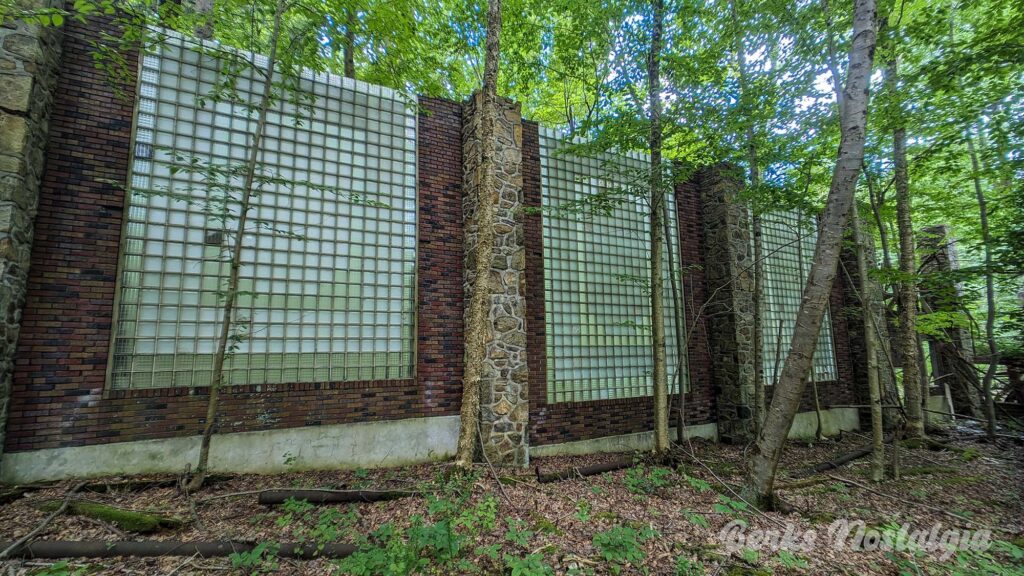
The first mention of Dreamland Park in the Reading Times was in reference to a basketball team Kreitz started managing in the fall of 1938. Coincidentally this was the same time the land that would become Dreamland Park off Pricetown Road in Ruscombmanor Township was purchased by Ralph’s brother Alton Kreitz. The deed for the property, which was a farm and land at the time, was dated September 9th, 1938. Owner Charles Cook sold the roughly 150 acres to Alton Kreitz for $1. Realistically, this deal was likely “under the table” between Ralph and the seller with Alton fronting legally for his brother. Construction began in spring of 1939 and the park was complete enough to hold a picnic for 5000 people by August. Dreamland Park was open for business.
In May 1940, the beginning of the Park’s first full season, Alton Kreitz petitioned a Berks County court for 10 policemen to help patrol the park. He was granted the petition, but Judge Paul N. Schaeffer made him testify that no gambling would be permitted on the premises and no beer or liquor could be sold. “It is to be an amusement park, an admission will be charged and free entertainment provided“, insisted Alton Kreitz.
The judge asked him if he was connected with Matz & Kreitz and Alton assured him he was not. While Alton technically owned the land, it was established that Ralph had all of the buildings on the property erected at his own expense. Some of the structures included the “Club House“, four bungalow style dwellings, a few one-room cottages, a 2000 person capacity auditorium and dance hall, three concession stands, a circular building containing a carousel and a bathroom building.
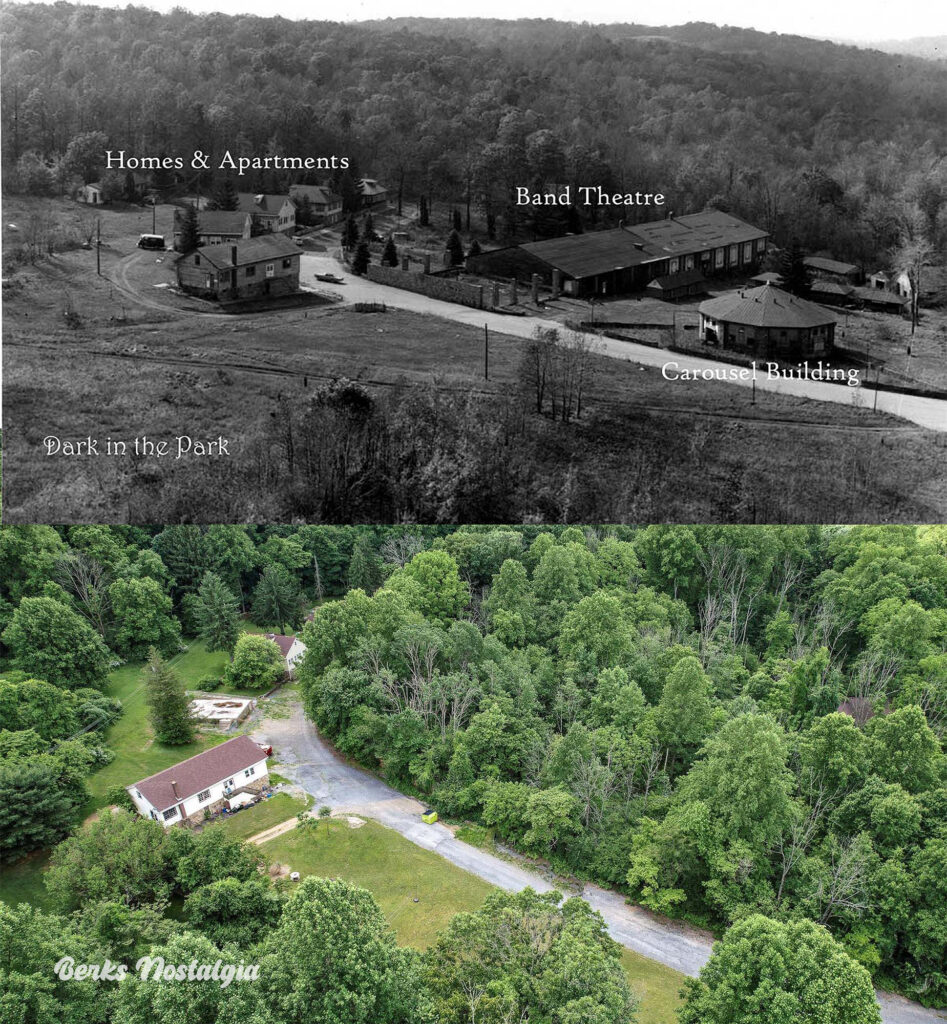
While the origins of the name “Dreamland Park” were never explicitly published, there was a popular Dreamland amusement park on Coney Island between 1904-1911 in New York City. It is conceivable that Kreitz could have visited the park as a boy. Perhaps foreshadowing the fate of our own Dreamland, the one on Coney Island allegedly never made money, burnt to the ground and then the land it sat on was fought over in a nasty legal battle.
Kreitz’s Dreamland Park wasn’t quite so short-lived; it hosted very popular events in the 15 years it was in operation. Boxing matches were hosted at the park regularly beginning in 1946. Advertisements ran weekly in the summer months for well-known musical acts like Cootie Williams, the Hoosier Hotshots and Rosemary Clooney. The park boasted a merry-go-round, a roller skating rink and state-of-the-art air conditioning in the auditorium. It was without a doubt an entertainment and amusement venue for the public, but we can only surmise what went on behind closed doors. Dreamland Park on the surface appears to have been a way for Kreitz to legitimize his illegitimate assets by making them tangible.
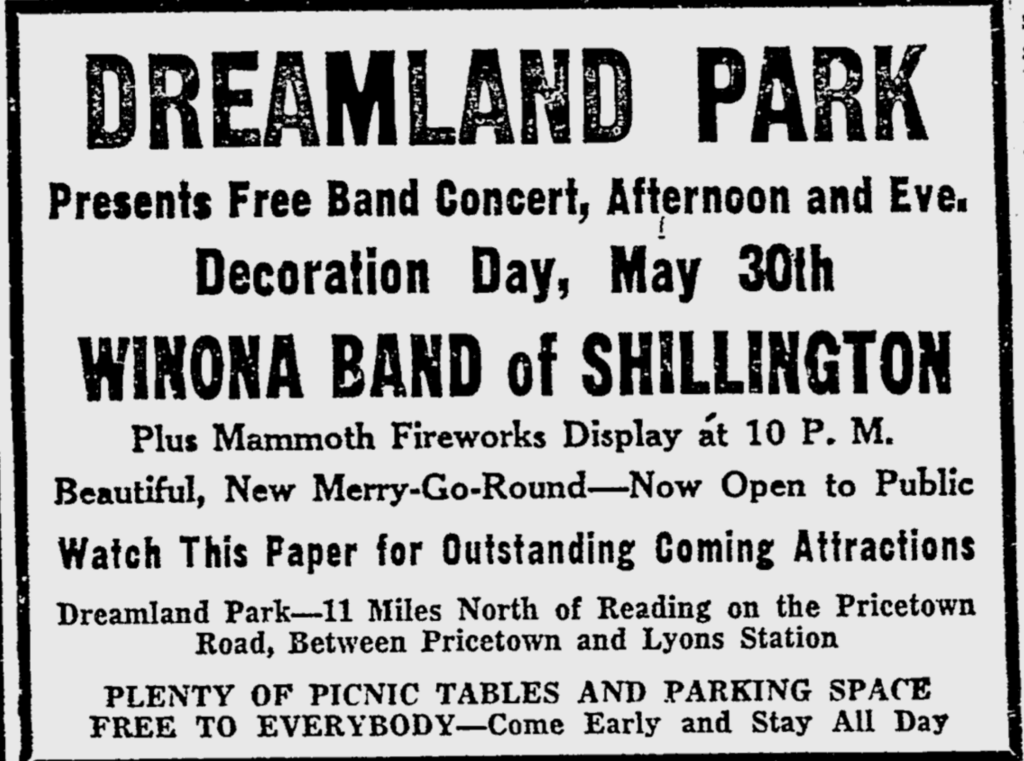
In 1948 Ralph Kreitz came under legal fire again for his slot machine business, this time by the federal government. A July 14th, 1948 Pittsburgh Post-Gazette article reported that Kreitz failed to pay enough in income taxes for the years 1944 and 1945. United States District Judge J. Cullen Ganey, who presided over the trial, found Kreitz’s case to be “most peculiar and amazing“.
The Judge said that the report he got from the probation department showed that “Kreitz’s charity is unbounded. He has given large contributions to churches, boys’ clubs and other charities”. Most incredibly “last christmas [he] distributed $7,000 worth of turkey’s amongst the poor of Reading“. The Judge went on to describe Kreitz is a relatively poor man who lives in a row-house with his 70-year-old mother and apparently “doesn’t even gamble or play his own slot machines“. Kreitz’s own attorney was quoted calling him “stupid and a fool“; he claimed Kreitz did not intend to defraud the government but that he “kept no books, he doesn’t know how to keep books“.
The United States government launched an investigation into the mob that ran Reading’s underworld in June of 1951. There was a book written about this era titled, “When the Rackets Reigned” by Ed Taggert. If this topic interests you click here to purchase the book on Amazon. The investigation culminated in a Senate Crime Committee in which Ralph Kreitz was one of many witnesses called to shed light on the gambling and illegal activity situation in Reading. Kreitz showed up to the hearing wearing a short sleeved shirt and was shockingly honest in his replies to the senator’s questions. He openly admitted to being engaged in slot machine business for twenty years. He also discussed various “shut downs” he had experienced by law enforcement during that period, which he described as a nuisance to his business.
Despite his lawyer’s description three years earlier, Kreitz seemed more brazen than stupid or foolish as he defended his business as legitimate; one that the people of Berks County wanted. He was adamant about paying $150 annually per machine in federal income tax. Kreitz also admitted to having known local prohibition kingpin Max Hassel when they were both cash boys at Pomeroy’s Department Store. I could go on with examples, but take my word – Kreitz was up to his ears in Reading’s racket scene.
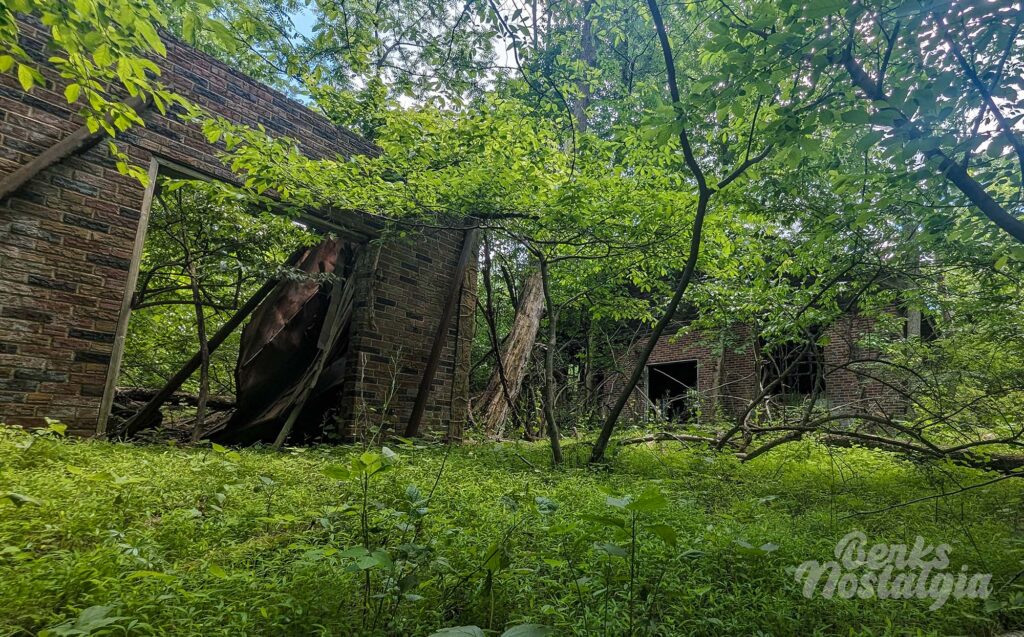
The Senate Crime Committee finished their report in August that same year. The August 31st, 1951 Reading Eagle headline about their report described Reading as an “open town” in which the integrity of the police was politically strangled by rackets. While Kreitz and others may have felt untouchable due to having Reading’s law enforcement and government in their pocket, the Feds were not on the same page. The hammer was about to drop and Dreamland Park would be a casualty.
The End of Dreamland
In 1954 the IRS again came after Kreitz for tax evasion. This time he was accused of paying only $8000 of the approximately $86,000 he owed the United States government for the years of 1947, ’48, ’49 and ’50. Kreitz pled guilty and was sentenced to 30 months in federal prison. Presiding Judge Thomas J. Clary had very little sympathy for Kreitz.
While on the stand, Kreitz told the jury that most of his income went back into local clubs and organizations in “a charitable sort of way“. “Isn’t that the same story you told Judge Ganey several years ago?” Judge Clary asked. “That’s right” said Kreitz. Their banter continued, “You don’t appear to be in very good physical condition. Don’t you see a doctor often enough?” asked the Judge. “I guess not.” replied Kreitz. “Didn’t the greater part of your income come from illegal sources?” asked the Judge. “Yes, Sir.” replied Kreitz without hesitation.
Court records showed that Kreitz was the very first person to ever be brought to Philadelphia court twice on tax evasion charges.
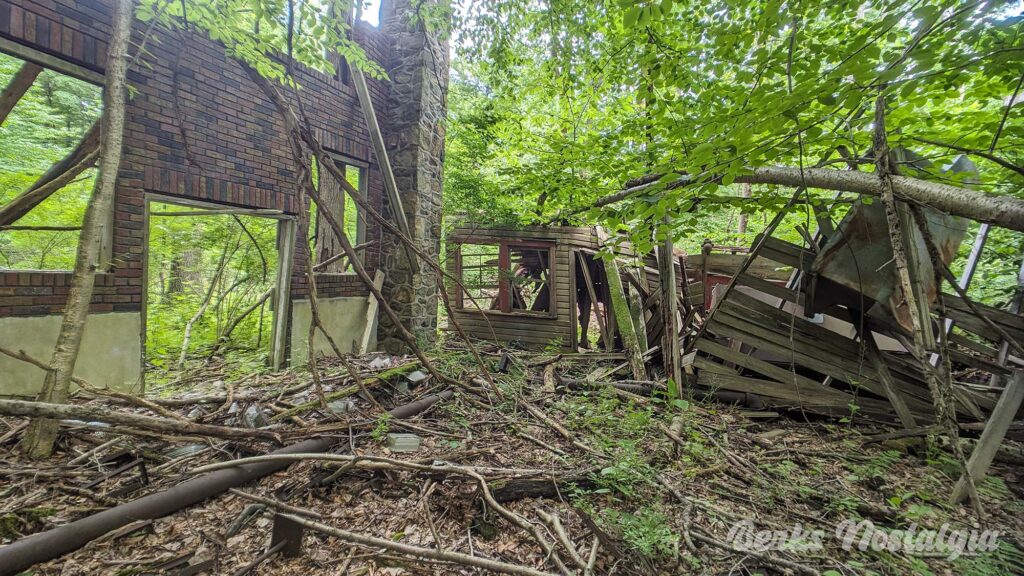
An auction took place on June 10th, 1954 at Dreamland Park for some of Kreitz’s personal property to make up some of the money he owed the IRS. The auction, which was allegedly $200,000 worth of merchandise, only netted around $20,000.
Kreitz served his 30 month sentence and was released in February 1956. The February 6th, 1956 Reading Eagle reported that Kreitz was “through with slots” and planned to open a legitimate store across Pricetown Road from his Dreamland Park. It also described his dismay when he returned to the park and found nearly all of his building’s contents had been stripped and sold to pay his debts. Though that was the least of his problems – almost immediately the IRS was knocking on his door again.

Now the federal government was claiming Kreitz owed them over $100,000 for the years 1942, ’43, ’44 and ’45. Not only was Ralph a defendant but brother Alton and his wife Catherine were also listed as co-defendants on this charge. The government maintained that while Alton and Catherine may have interest in Dreamland Park, Ralph was the real owner. They also claimed the park was worth $500,000 and that they intended to take it, too.
Kreitz fought back asking for a dismissal of the suit based on the fact that the property Dreamland Park sat on was not owned by him. He also claimed the suit against him was past the statute of limitations and was just the government hounding him “causing unjust oppression“.
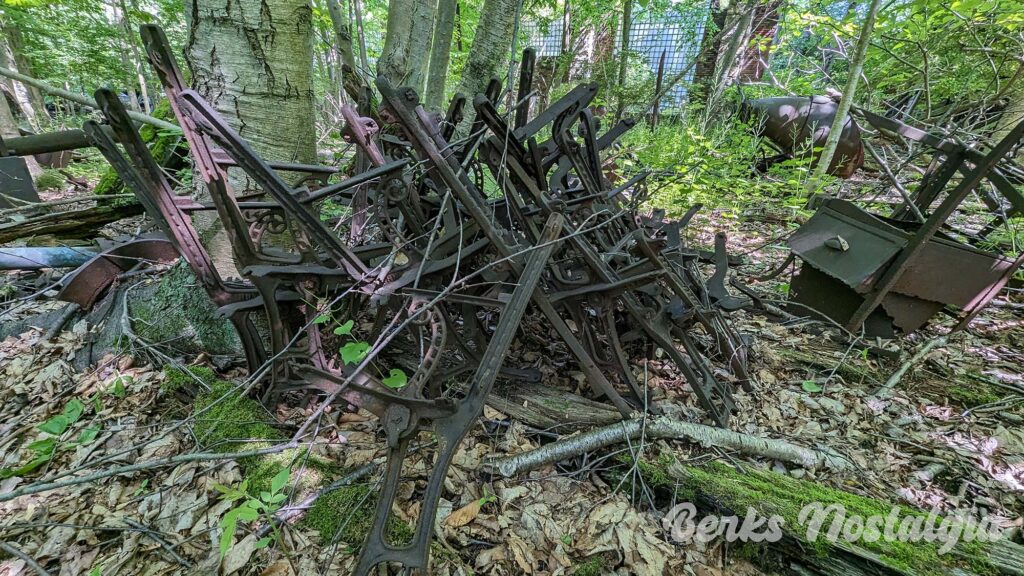
The trial began on February 6th, 1957. When Ralph took the stand he claimed Dreamland Park never made a profit and that all of his money came from slot machines. He was adamant that he only owned the buildings and that about 100 men had helped erect them without salary. The article goes on to describe the property of consisting of 26 brick and stone buildings. Needless to say no one was buying it. When Alton and wife Catherine could bare no more, they agreed to deed the property to the United States government in exchange for the end of the trial. With their decision Kreitz’s Dreamland Park became a place of the past, but his troubles were not yet over.
On March 13th, 1957 the Reading Eagle reported that 63 slot machines were uncovered on a farm near Dauberville. Kreitz admitted to them being his but also claimed they had not been in use since 1950. The IRS seized them since they were technically assets which could be used to pay off his back taxes. In a strange legal snafu, federal law prohibited interstate shipment of slot machines, so the IRS could not even transport them to another state where gambling was legal. After sitting on the slots without any way to gain monetary value from them for over five years the IRS finally decided to dispose of the machines by throwing them all into the Atlantic. They literally loaded them onto a Coast Guard cutter in Cape May, rode out beyond the three mile limit and hurled them into the ocean. They may still be out there.
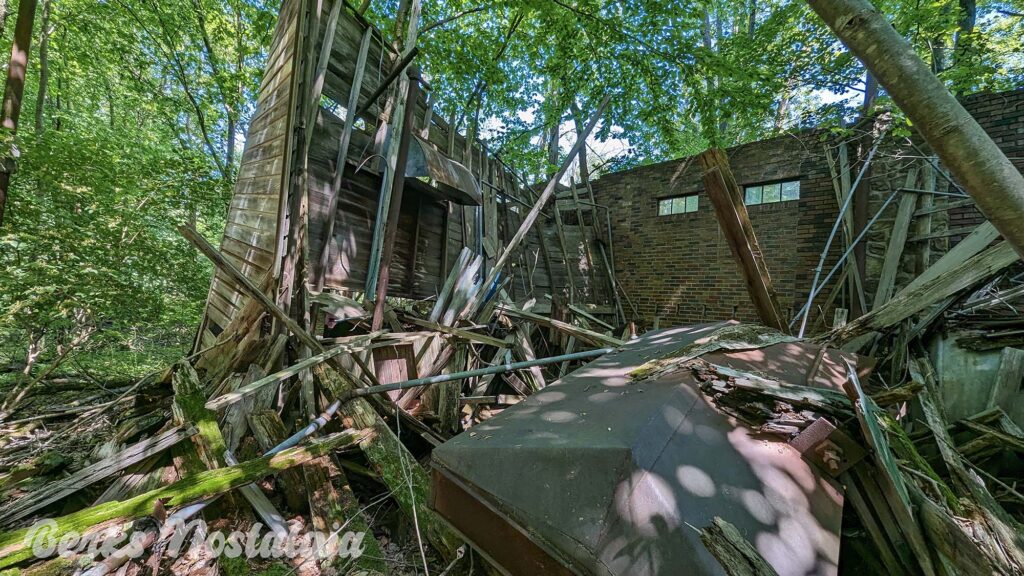
In 1962 the government tried one last time to get money out of Kreitz, claiming he still owed over $200,000. Kreitz’s attorney countered that it was past the statute of limitations to collect on any taxes from the years 1946-1953. That was the end of Kreitz’s legal battles with the United States government.
Ralph Kreitz died of a heart attack on June 7th, 1967 in Community General Hospital where he had been for two weeks. His death certificate listed his residence as 1316 Hampden Boulevard. The June 8th obituary in the Reading Eagle recounted his tribulations with the IRS and described him as the owner in developer of Dreamland Park. Kreitz’s story was a fascinating one which needed to be told in its entirety, but as we all know Dreamland Park’s story didn’t end with him. The most infamous times were yet to come.
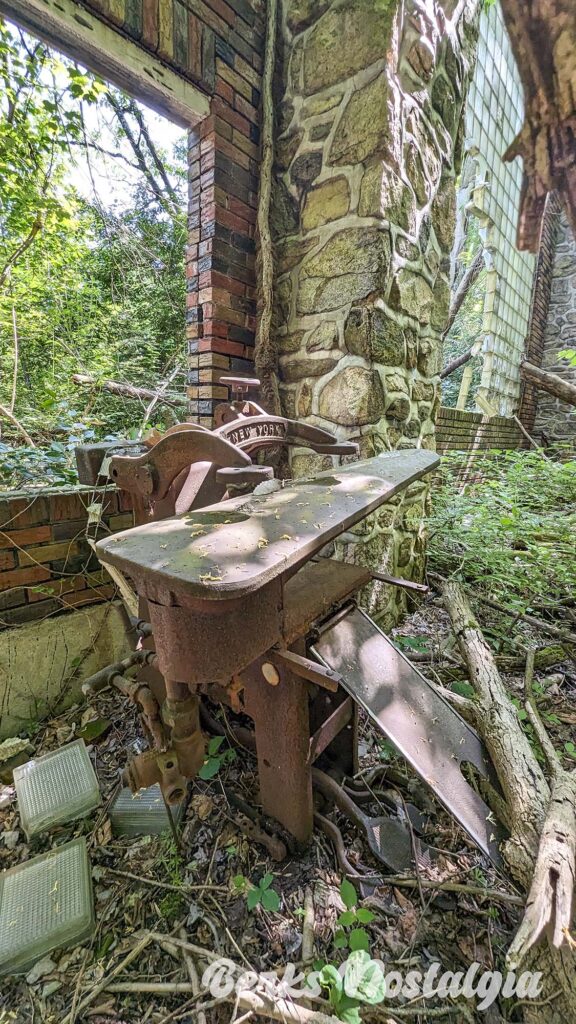
Dreamland Park Sold
On September 20th, 1957 the Reading Eagle reported that Dreamland Park went up for auction by the IRS. It was purchased for $34,000 by a local contractor named Paul Zipp. The store structure directly across Pricetown Road was also included in the sale. Zipp used the property to store some of his construction equipment, but did not utilize most of the park buildings. He again put it up for auction in 1963.
The August 11th, 1963 Reading Eagle reported that the property was purchased for $50,500 by Musa J. Eways. Eways, who was president of Mast Engineering Company, was quoted in the article as not yet knowing what he would do with the Dreamland Park property. Besides renting out the bungalows and converted “club house” building, it seems like most of the buildings continued to sit vacant and fall into disrepair.
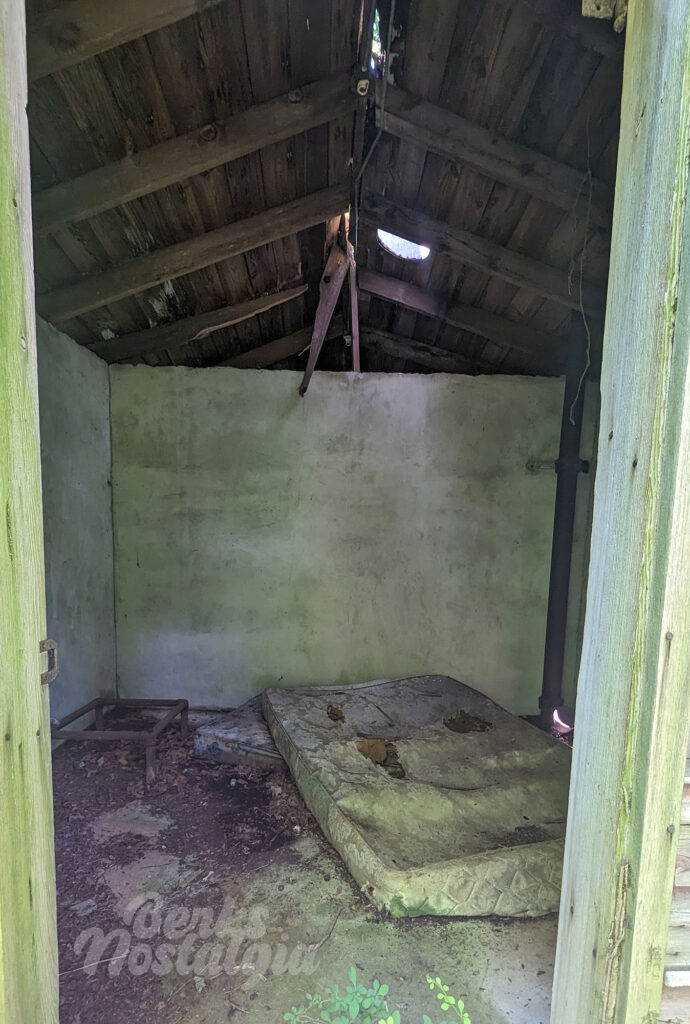
The Pagans Move In
On August 12th, 1969 three young men were driving out Pricetown Road when they pulled into Dreamland Park to ask for directions. When they tried to leave a closed-panel truck was blocking the entrance, several men appeared and forcefully took them from the car and into the auditorium building. Pagan gang members questioned and beat the three young men for two and a half hours thinking they were rival gang members. When 20-year-old Ronald Buchter stood up to explain they were merely lost, one gang member stabbed him in the chest with a five inch blade. Eventually they were allowed to return to their car, but threatened with more violence if they squealed to police. Buchter ultimately needed surgery for his injury and the hospital informed the authorities.
Warrants were immediately obtained for 10 suspects, along with a search warrant for the Dreamland Park auditorium building. In the early morning hours of August 13th eight of the ten suspects were arrested, most on-site at Dreamland Park where they admitted to have been renting the auditorium building for $50 a month from Musa Eways. Eway’s son James was amongst those charged with assault and battery, robbery, conspiracy and possession of narcotics charges.
The August 16th, 1969 Reading Eagle featured an article about nearby residents complaining about the Pagans at a Township Supervisors meeting the previous night. Ruscombmanor Township Supervisor Raymond Everhart mentioned that several residents “had notified him 27 days ago that the Pagans had moved in” and were apparently renovating the auditorium building and living in it without having permits. The board decided on sending owner Musa Eways a “snappy letter” citing codes and the township’s displeasure with the permanent residence of a motorcycle gang at the property. Little did they know there were already two bodies in shallow graves nearby.
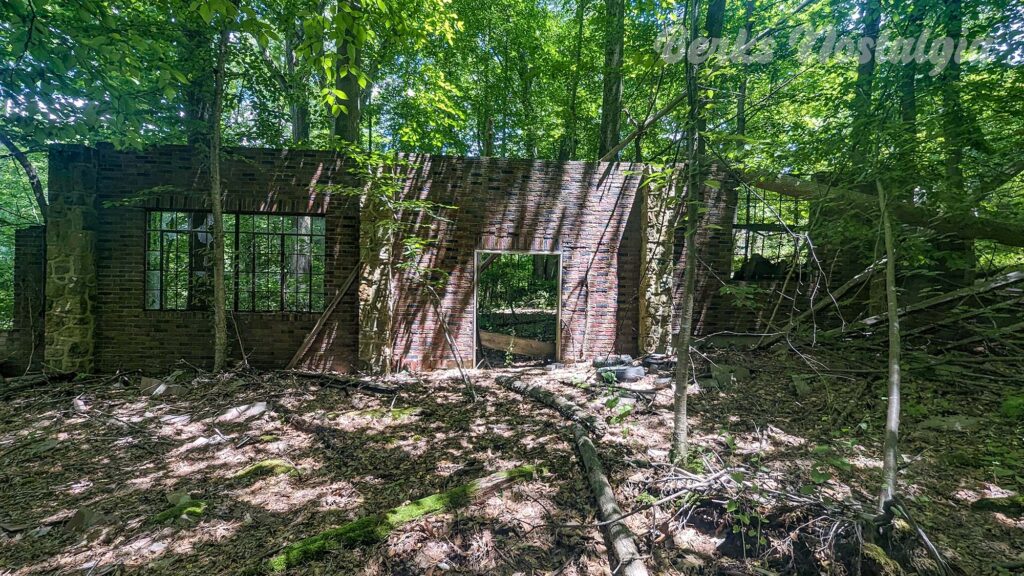
Dreamland Park Murders
The following recounting of the events that took place in the early morning hours of August 13th, 1969 are from a Justia synopsis of the Commonwealth v. Martinolich trial – specifically Harlan Bailey’s and James Eways’ testimony.
Following the assault on the three young men, a few Pagan motorcyle gang members decided to head to the Kutztown Fair. By the time the fair was ending around 11:30pm, James Eways, Harlan Bailey, and Leroy Stoltzfus Jr., returned to the park where they met up with Robert Martinolich. The four decided to leave again to “look for girls” in the same rented paneled truck. They made their way to Skyline Drive and parked at a lookout area to the north of the tower, next to a vehicle with a young couple inside. Bailey, Stoltzfus and Martinolich got out of the vehicle Eway’s was driving and got into the car with the young couple who were in the back seat. That couple was 20-year-old Glenn W. Eckert and 18-year-old Marilyn H. Sheckler. Martinolich was allegedly brandishing a handgun.
The three commandeered the couple’s car and followed Eways back to Breezy Corner where Pricetown Road and Route 73 intersect. The couples vehicle, being driven by Bailey, pulled up beside and a conversation ensued about where they should abandoned it. Eways suggested Leesport, where they left it near the railroad tracks, and everyone got back into the truck. When they arrived back at Dreamland Park there were two cop cars at the entrance. They had come with the warrants to arrest the suspects from the stabbing incident. Because of the commotion they kept on driving around. It is during this time that all four gang members took turns raping Marilyn Sheckler in the back of the truck, stopping twice to switch drivers.
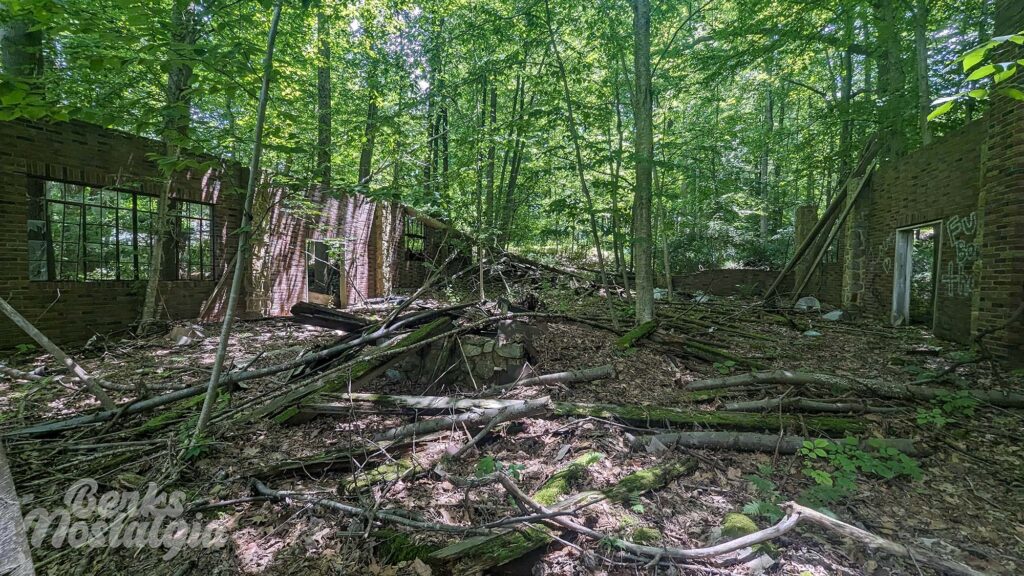
After two more drive-bys revealed the cops were not leaving, Martinolich ordered Eways to pull over just south of park and let everyone off into the woods. At this point Martinolich directed Eways to go alone in the truck and see if he could figure out what was going on. Shortly after Eways departed six more police cars went flying up Pricetown Road to the Park, and Martinolich instructed Bailey to take his address book and make a call to the “mother club” for help.
Bailey left on foot. About a half mile away he found a phone that didn’t work, as well as another about a half mile beyond that. He then began hitchhiking back when Eways happened to pass by and pick him up. At this point it was dawn. Eways was running out of gas so he drove the truck to a Citgo station on the 5th Street Highway where he and Bailey were arrested. Police Officers found the key’s to Eckert’s car along with the address book in Bailey’s pockets. Both men testified under oath that both Glenn and Marilyn were alive the last time they had seen them.
The events which transpired after Eways and Bailey left Stoltzfus and Martinolich with the young couple are based on Bailey’s testimony of what Stoltzfus and Martinolich revealed to him weeks after the fact. What we do know is that both men were arrested that morning in Pricetown; roughly a mile south from where the bodies would end up being found. Bailey later caught up with Martinolich and Stoltzfus in the yard at Berks County Prison where they were all awaiting trial for the August 12th stabbing incident. It is worth noting that during that trial Buchter identified Martinolich as the man who stabbed him on the night of August 12th.
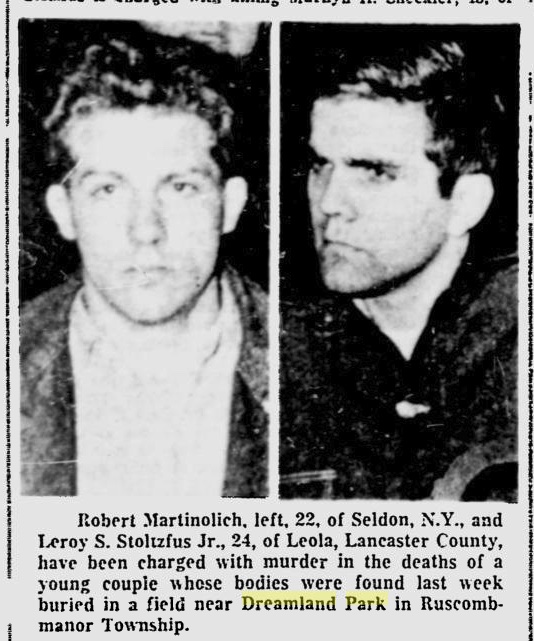
Bailey testified that he approached the two and asked what had happened to the boy [Glenn Eckert]. Martinolich answered that he had asked the boy what his life was worth, and when the boy laughed at the question he shot him in the head. Similarly, Stoltzfus admitted to Bailey that he had tried to strangle Marilyn to death but when that didn’t work he hit her in the head with a rock. Both had been tied to trees and tortured before their deaths.
It would be two months before police would find their bodies. Eways and Bailey allegedly tipped off police to their location. Marilyn was found on October 23rd under a grave of rocks. Glenn was found the following day when an officer caught a reflection of sunlight off of the glasses still on his face. He had two bullet wounds in his skull. Both bodies were badly decomposed due to being exposed to the elements. As a result physical evidence would be non-existent.
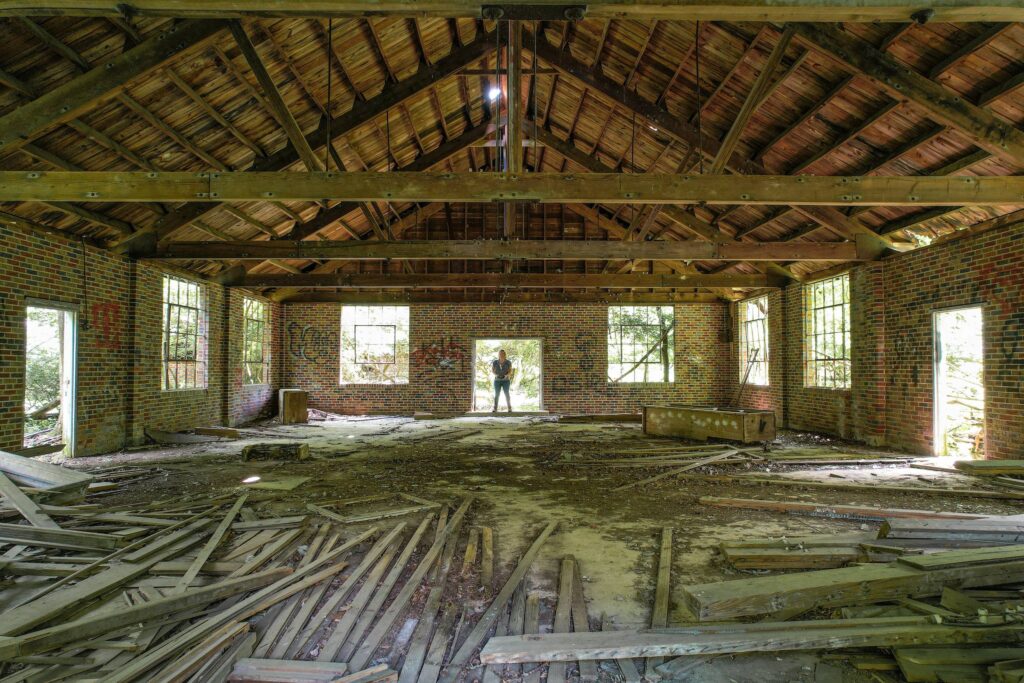
District Attorney Bob Van Hoove charged Martinolich with Glenn’s death and Stoltzfus with Marilyn’s. Eways’ and Bailey’s testimony were key in both trials; it being the only “evidence” against Martinolich and Stoltzfus whom both claimed innocence. According to them, they were hiding under the floor in a crawlspace of a building at Dreamland Park during the cop’s raid that night. Later that claim changed when Stoltzfus took the stand in his own trial and testified that he witnessed Bailey murder Marilyn by beating her with the butt of his gun. However, Eways’ and Bailey’s recounting of the events had always been consistent with each other’s story. By the time they gave their testimony they hadn’t seen or spoken to each other since they were picked up at the Citgo station the morning of the murders.
Convictions leading to life sentences in prison were imposed on Martinolich and Stoltzfus within a year of the bodies being found. Over the years they used their appeals but were never successful. They both died in prison – Stoltzfus in 2010 and Martinolich in 2018.
The murders rocked Berks County. Decisions made by District Attorney Bob Van Hoove were wildly controversial at the time. He cut deals with both Eways and Bailey for the sake of putting away Martinolich and Stoltzfus, adamant that without their testimony convictions not have been possible. Many felt that the two should have also been charged for their admitted rape and kidnapping of the couple.
It is worth noting that Eways didn’t see any jail time for his part in the murders. The few times he was arrested he was bailed out by his father. This includes a stint where he fled to Texas, missing his arraignment. He turned himself in to authorities and was escorted back to Berks County, where he was still allowed to go home.
Bailey did sit in Berks County Prison for nearly two years for the stabbing incident. He was ultimately set free because the commonwealth never brought the case to trial. In a May 11th, 1971 Reading Eagle article Judge Hess described his two year confinement as “a miscarriage of justice” and expressed discontent at the fact that the prosecution never initiated a trial. After release it seems Bailey fell off the map, I can’t seem to find any information tied his name. If he is still alive he would be roughly 88 years old.
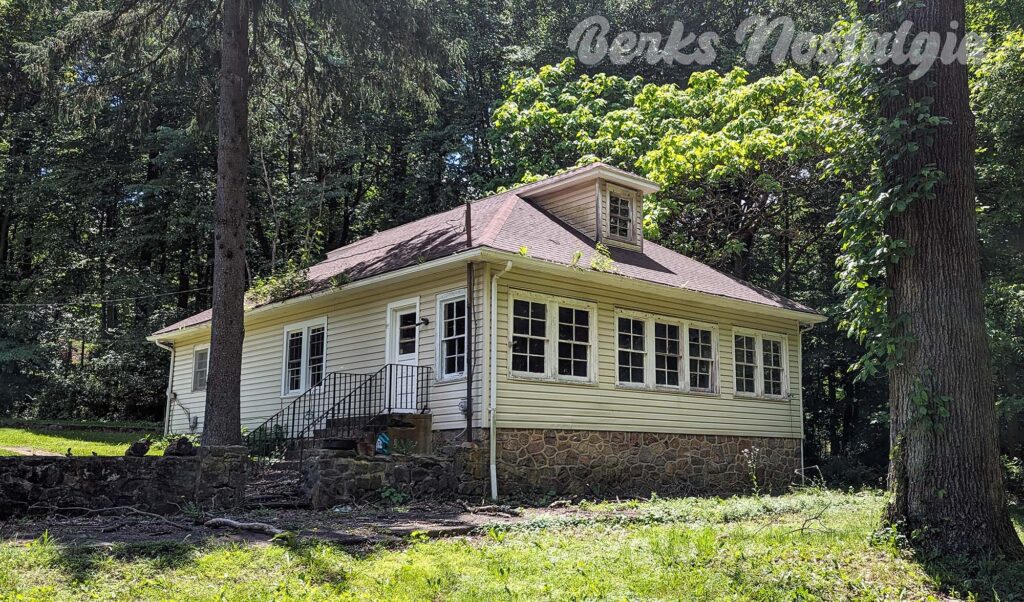
Eways went on to be convicted in 1995 when he shot a 17-year-old boy in a car in front of his own home. After being acquitted of first and third-degree murders in that case, he was convicted of involuntary manslaughter. For that he served five years. Eways is still alive and living in Berks County.
In 2005 a book titled, “The Dreamland Park Murders” was published by Doris Dorwart and Robert Snyder. Dorwart, a professor at Mansfield College and Snyder, decorated police detective had a very different view of the events surrounding the evening of August 13th, 1969. They alleged there was legitimacy in some of the dark rumors that circulated about the murder and trials; including payoffs, conspiracies and links to other unsolved murders. They believed the wrong two men were convicted for the Dreamland Park Murders. Click here to purchase that book on amazon, though you’ll need a pretty fat wallet. At the time of publishing this article the book cost $2,900 used. Only 1200 copies exist so there are not many in the marketplace at any given time. I have been told that many local libraries do have a copy of the book for loan.
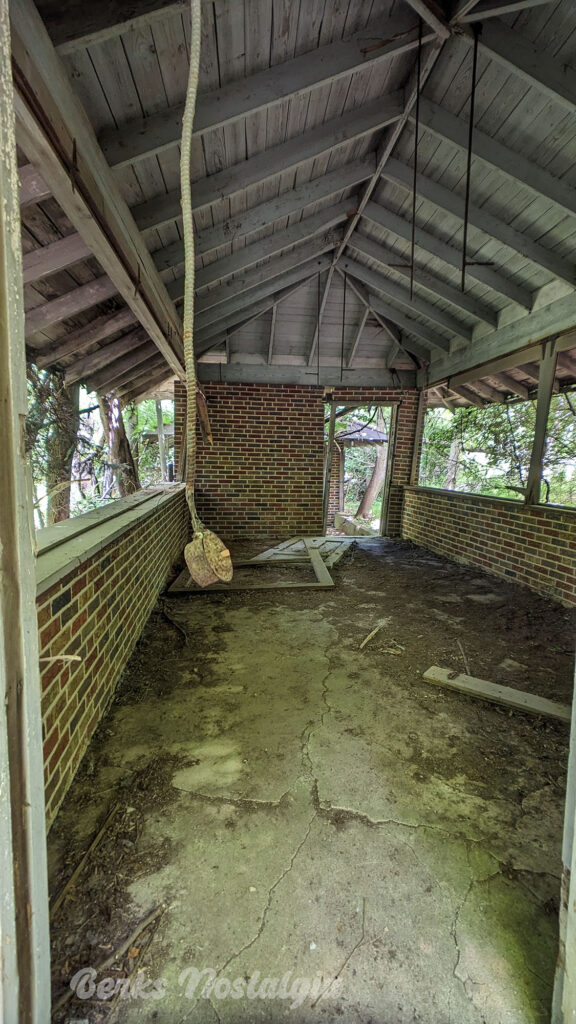
Dreamland Recreation Company
On August 29th, 1973 an article in the Reading Eagle reported that the 16-acre Dreamland Park parcel had been sold to partners David Gehret and Anthony Fischetti under Dreamland Recreation Company. The article also stated that their plans for the property called for picnic and banquet areas, tennis courts, and a swimming pool. A few weeks later a Reading Eagle article described yet another Ruscombmanor Township Supervisors meeting where residents showed up full force to oppose these plans to reopen Dreamland Park. Residents cited issues with zoning; the park had been been granted an exception from residential zoning by supervisors quietly the previous month.
Ultimately the township un-approved the exception. The owner’s appeals on the decision were rejected in court in February of 1975. Despite their development project never coming to fruition, they would own the property for the next half-century. The five dwellings on the property continued to be rented out as residences. Dreamland Recreation Company sold the property in 2021. Most recently in 2022, one of the bungalow dwellings was completely destroyed by a fire.
For Sale
The 16 acres that include the immediate park are currently for sale again. That’s right, for only $885,000 Dreamland Park and all of its heinous history can be yours. Four dwellings, including the original “club house”, the bathroom building, three concession stands and an old dance hall are standing. The property zoned R1, which allows development like single family homes, camp grounds, horse farms and uses by special exception. For more info, contact listing agent Sean Moretti at Destination Realty.
Dreamland Park’s story is one riddled with nefarious activity. What does the next chapter hold?
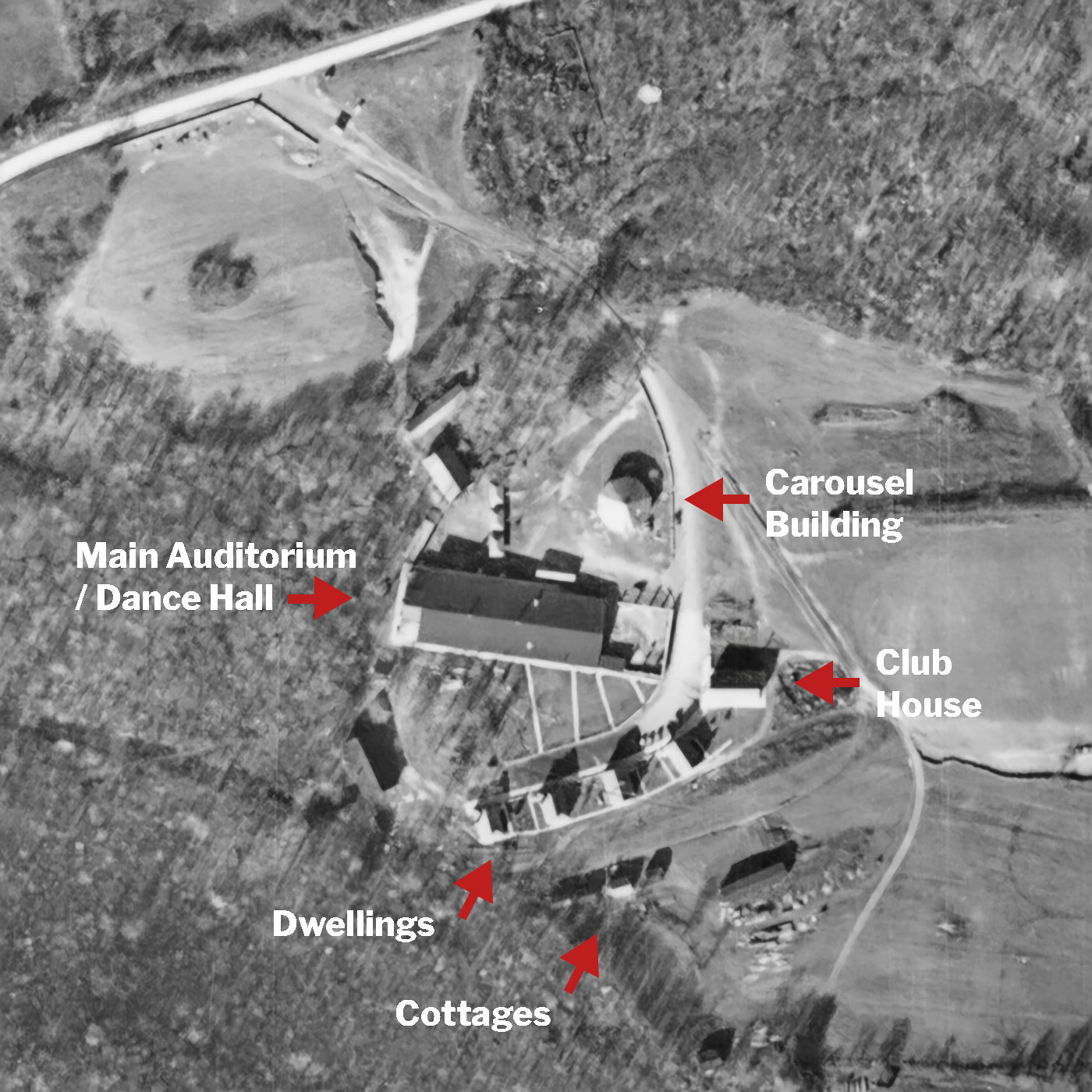


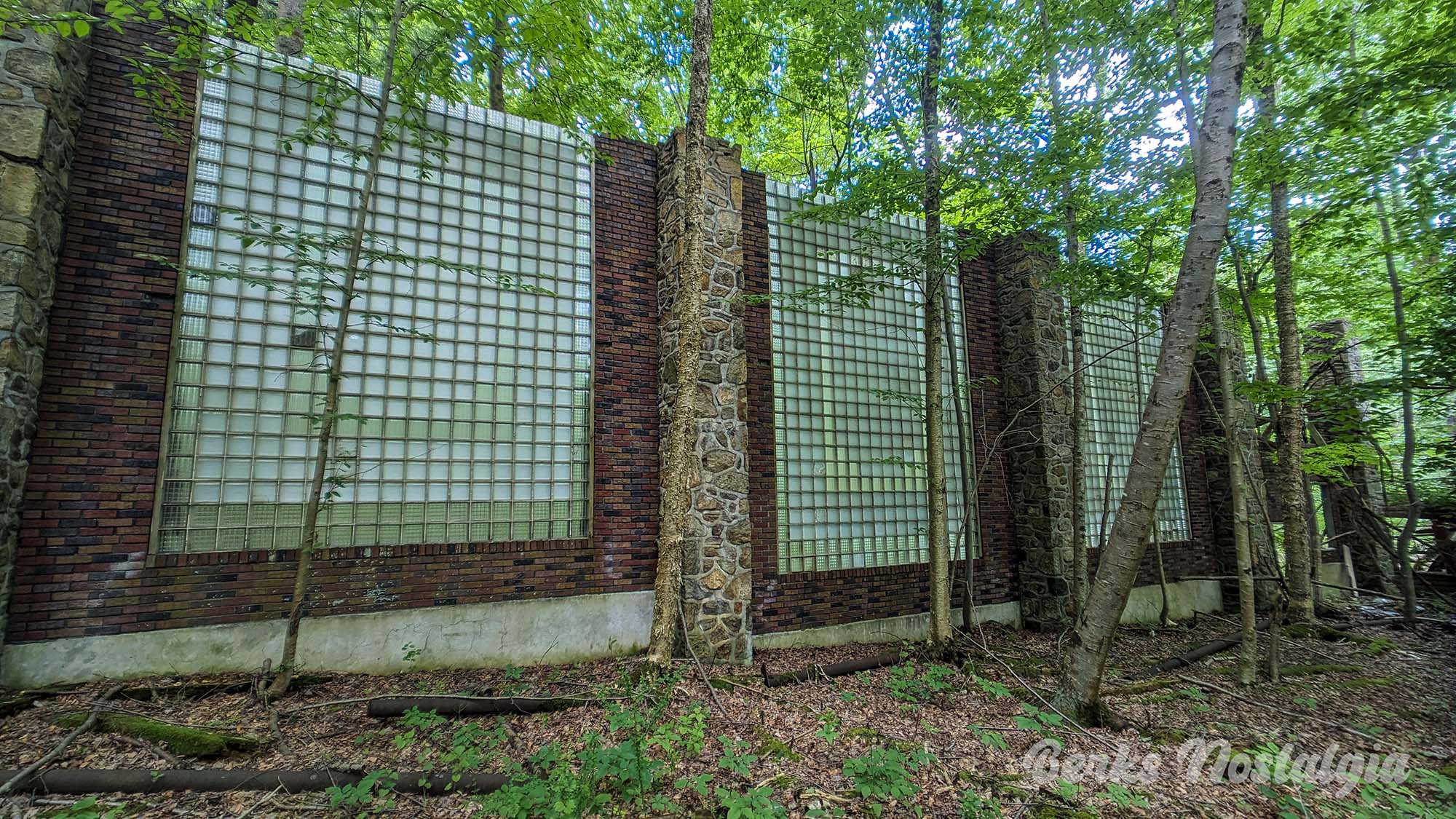
Thanks for the very informative article! Often wondered about the history of that place.
I had to go back there for my job before the building burnt down and thought the stone homes were actually pretty neat. We don’t live far from there but I did not know about the fire. Hope whoever purchases the property restores the buildings as they reminded me of buildings you’d find in a national park….like WPA era construction. My dad does remember going to the park when he was a kid. Great write up and agree that the Murder in the Park book definitely skews sympathy for the 2 that were jailed. Sounds more like they were all in the same mental zone though so out looking for trouble. All 4 of them should have been held responsible.
Excellent research, great work. My parents met there at the roller rink in the 1940s
I inadvertently was photographing Eways current home thinking it was just a historic building. I had no idea someone lived there, no less what the man’s record is and that a kid was killed outside that very place! I got some great photos, whatever the case!